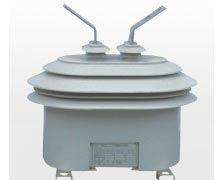
What does an instrument transformer do?
Current Transformer (CT): This type of transformer steps down high currents in the power system to a standardized value typically suitable for measurement and protection devices. Current Transformers are commonly used to supply current inputs to ammeters, wattmeters, energy meters, relays, and other protective devices. They provide isolation and protection for metering and control circuits from the high currents present in power systems.
Voltage Transformer (VT) or Potential Transformer (PT): This type of transformer steps down high voltages in the power system to a standardized level suitable for measurement and protection devices. VTs are used to provide voltage inputs to voltmeters, energy meters, relays, and other protective devices. They isolate and protect measuring and control circuits from the high voltages present in power systems.
Instrument transformers are essential for accurate metering, control, and protection of electrical systems. By stepping down high currents and voltages, they ensure that sensitive measurement and control devices are not subjected to potentially damaging levels of electrical energy. They also provide isolation between the high-voltage power system and the low-voltage measurement and control circuits, enhancing safety for operators and equipment.
What are the two types of current transformers?
Which current transformer is more accurate?
What is the purpose of a current transformer?
What are the three current transformers?
What does a current transformer do?
What is difference between CT and PT?
How many types of CT transformers are there?
What is the CT in a switch yard?
What does CT mean on breaker box?
What happens if CT secondary is open?
What is the difference between CT and normal transformer?

